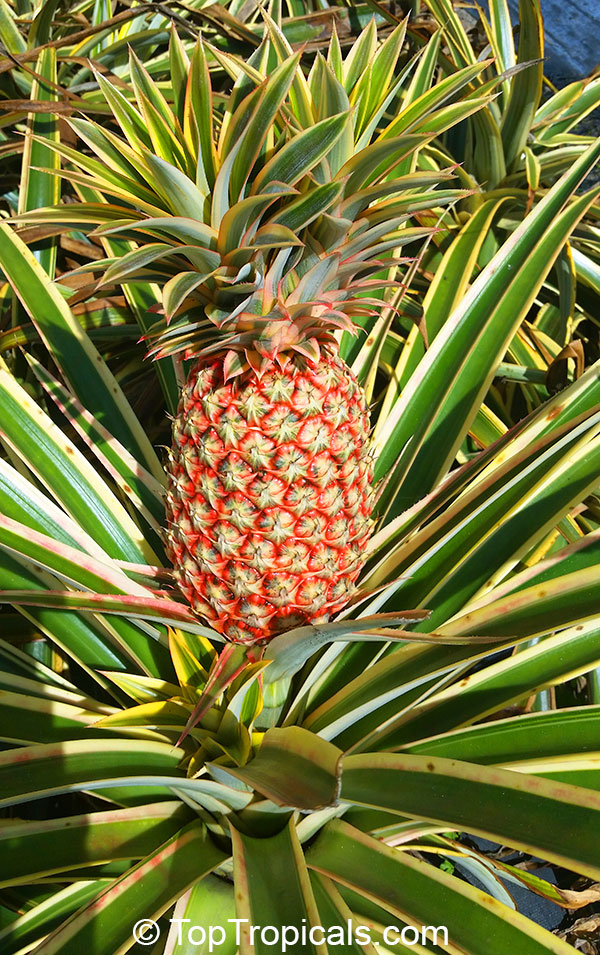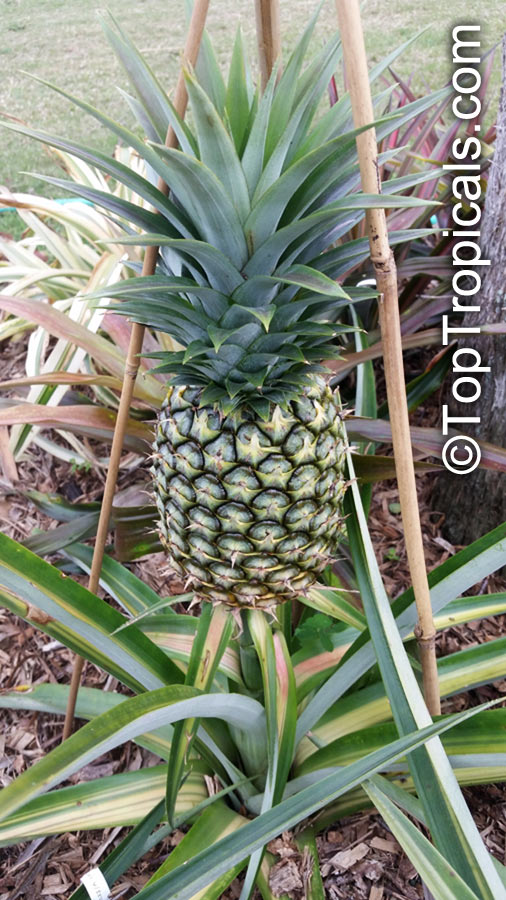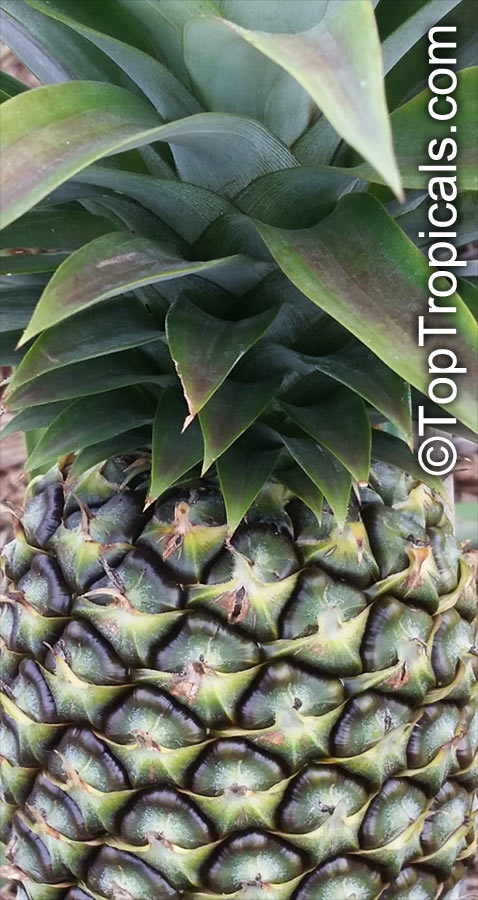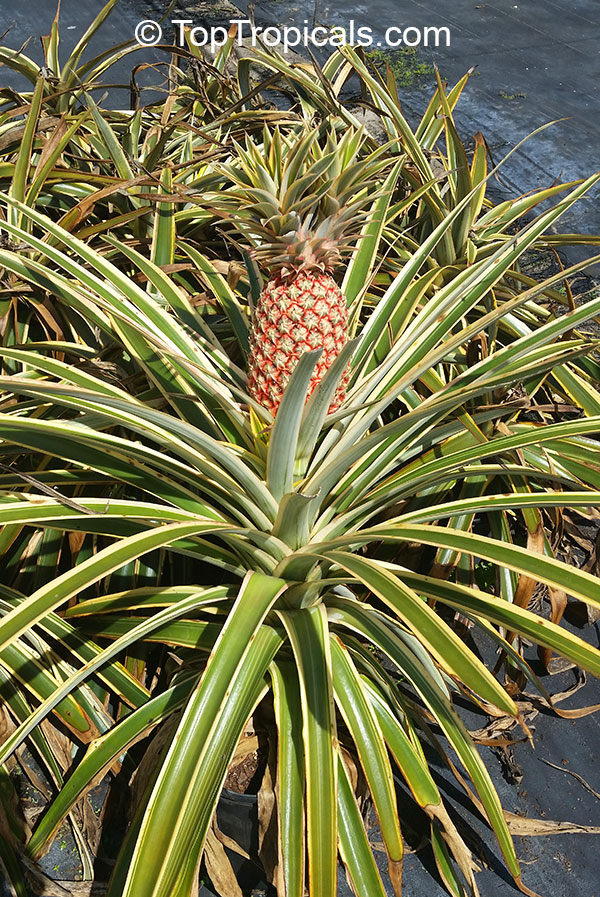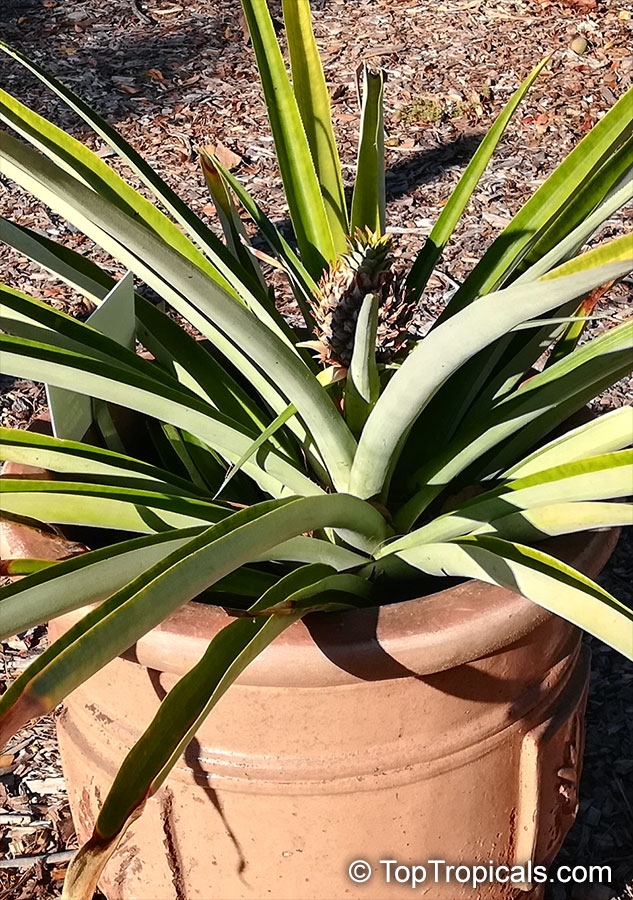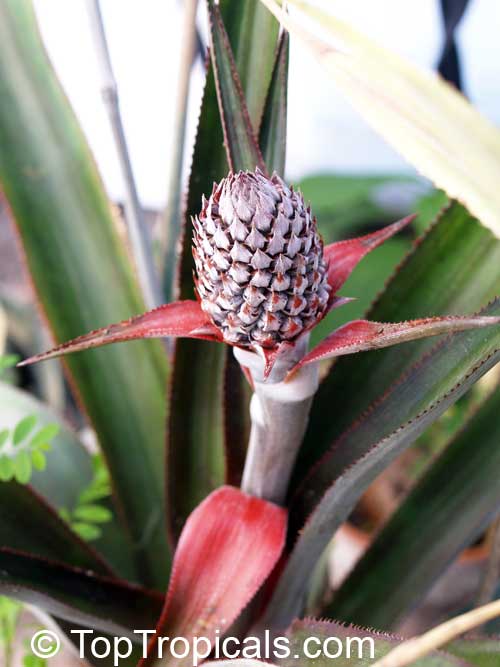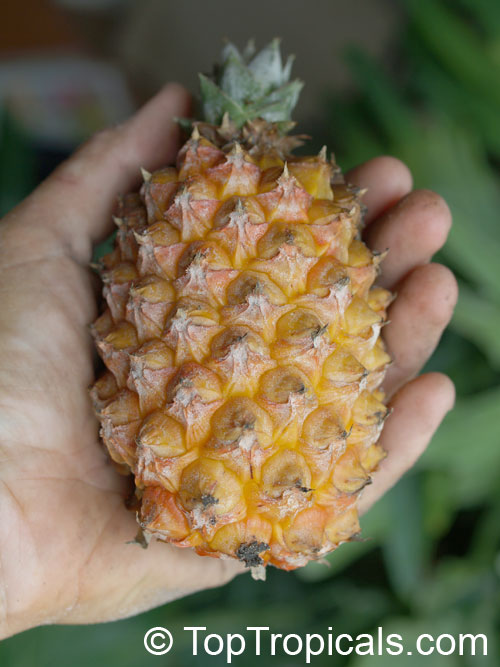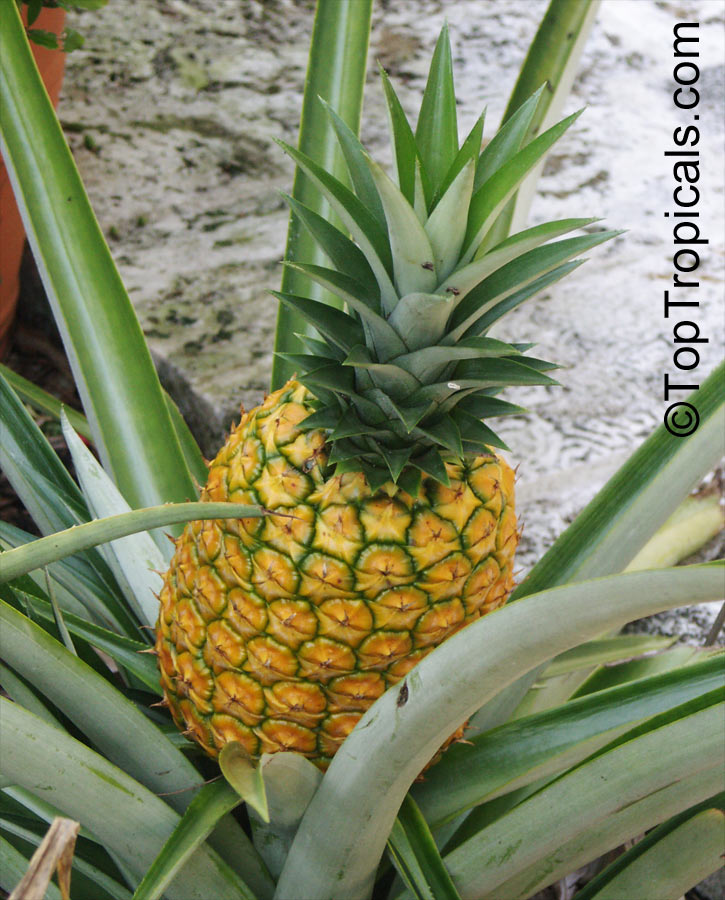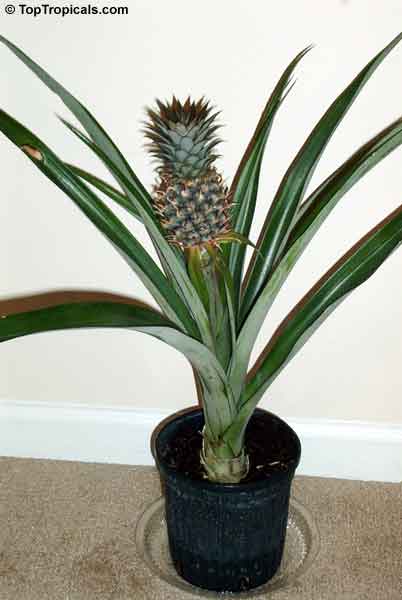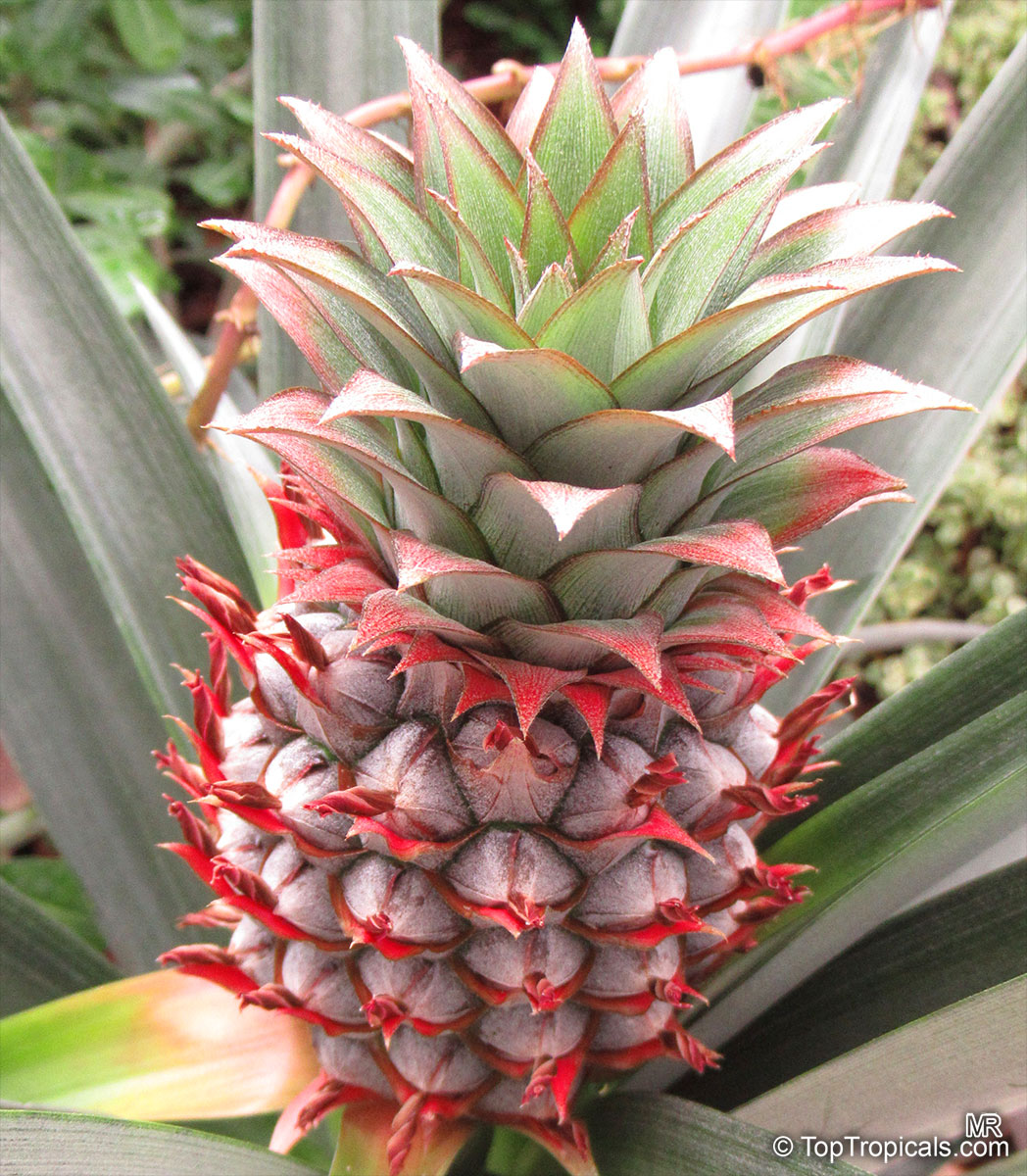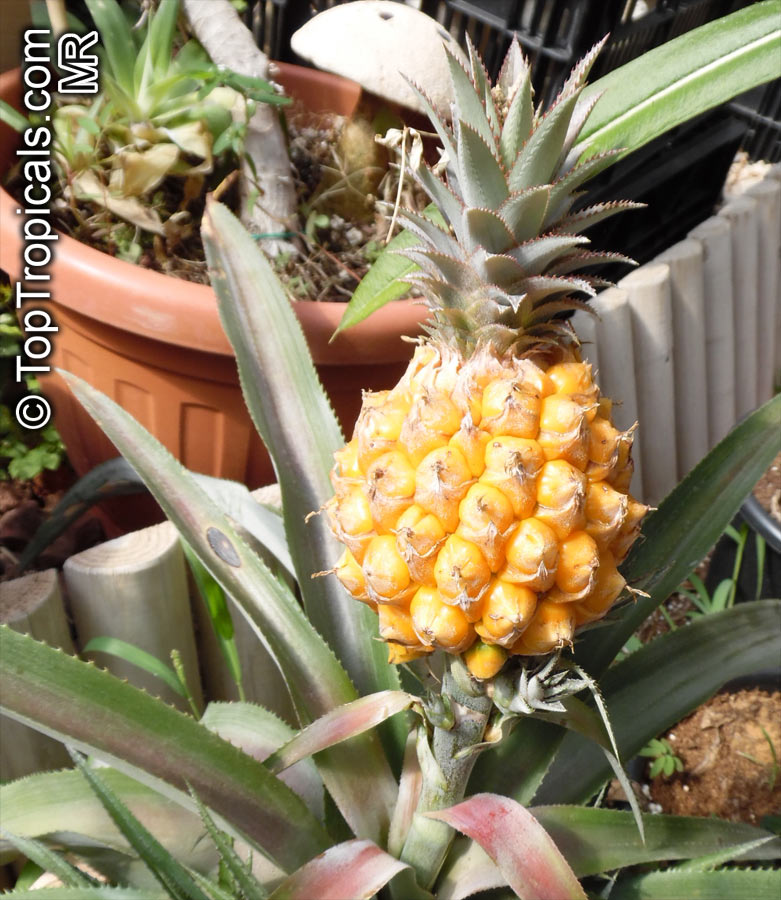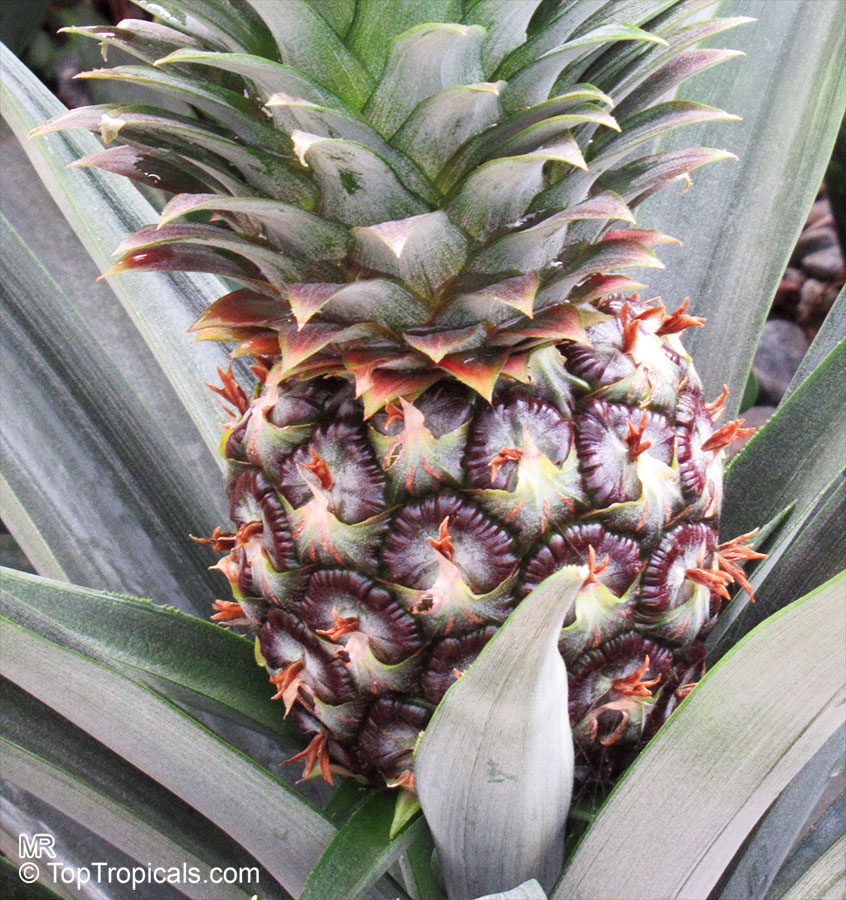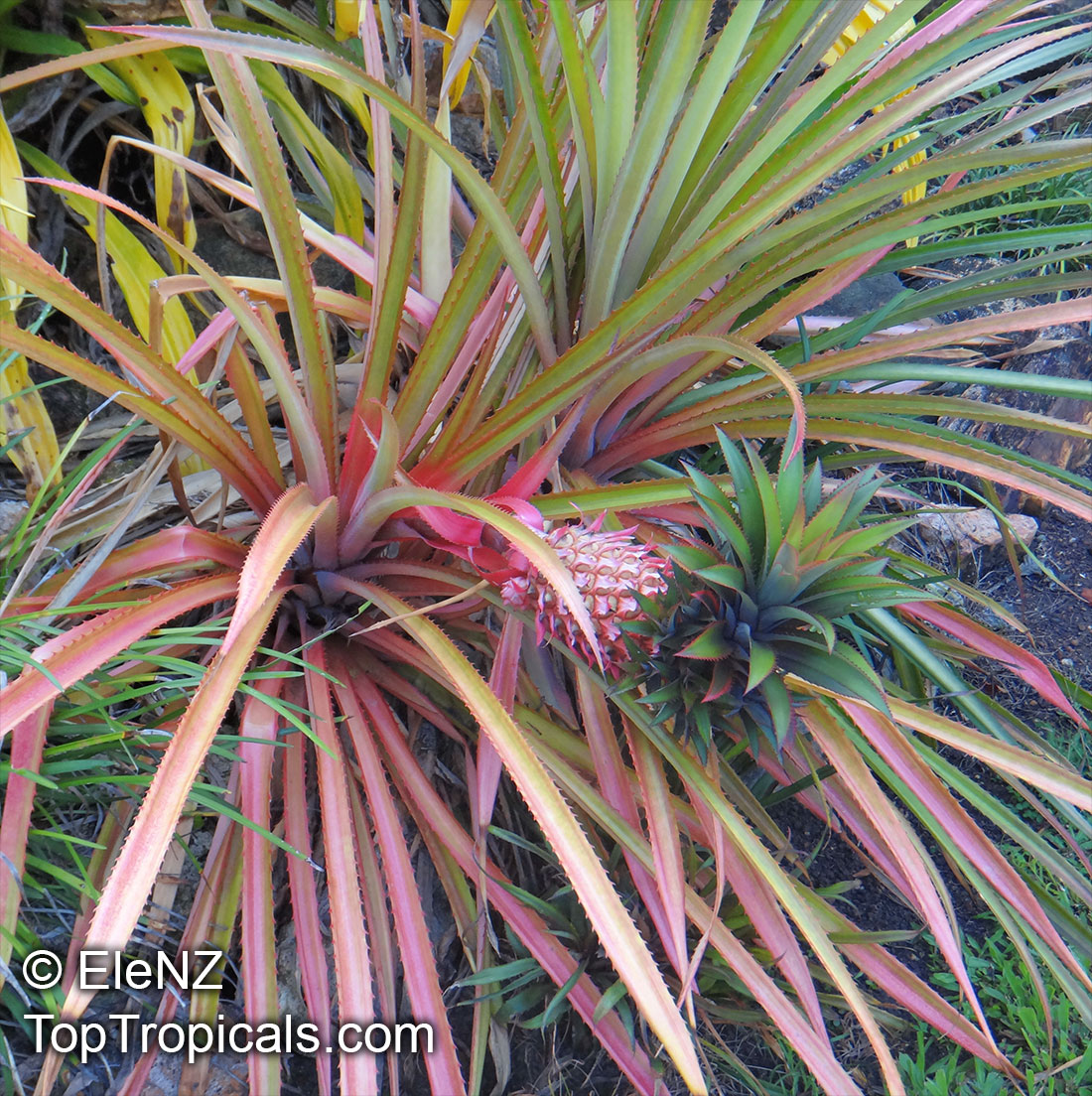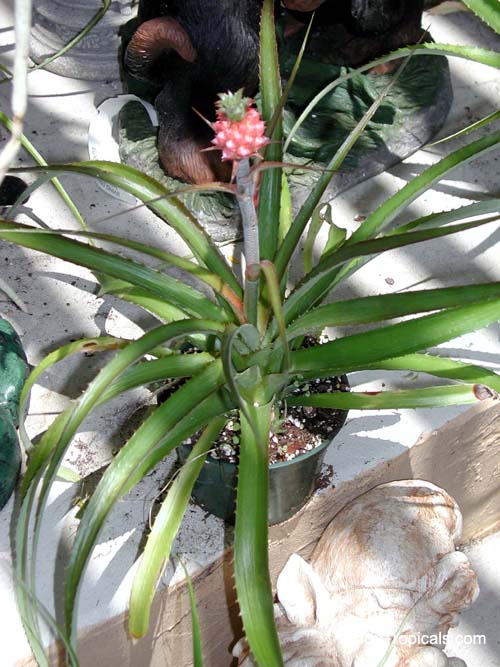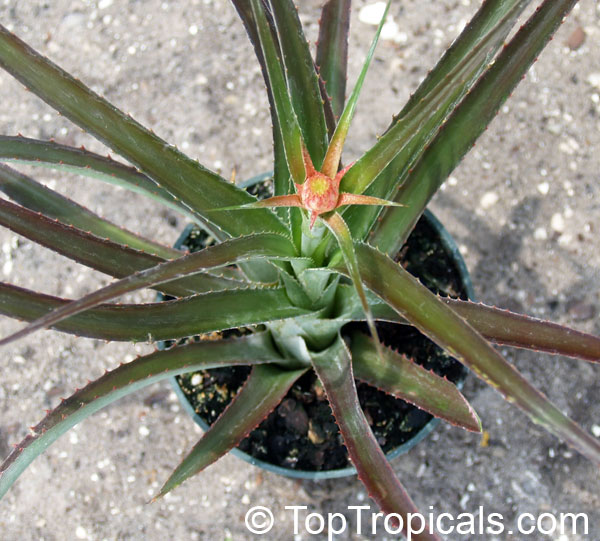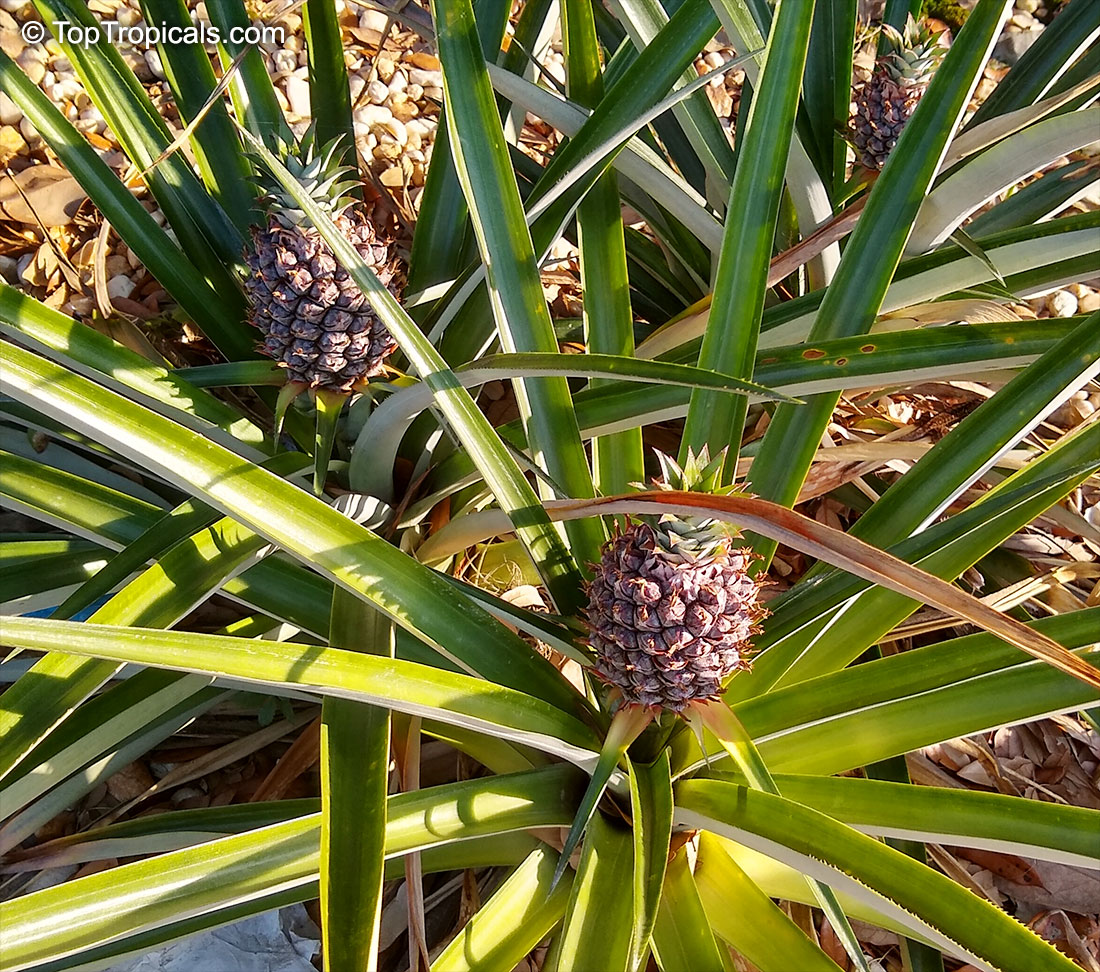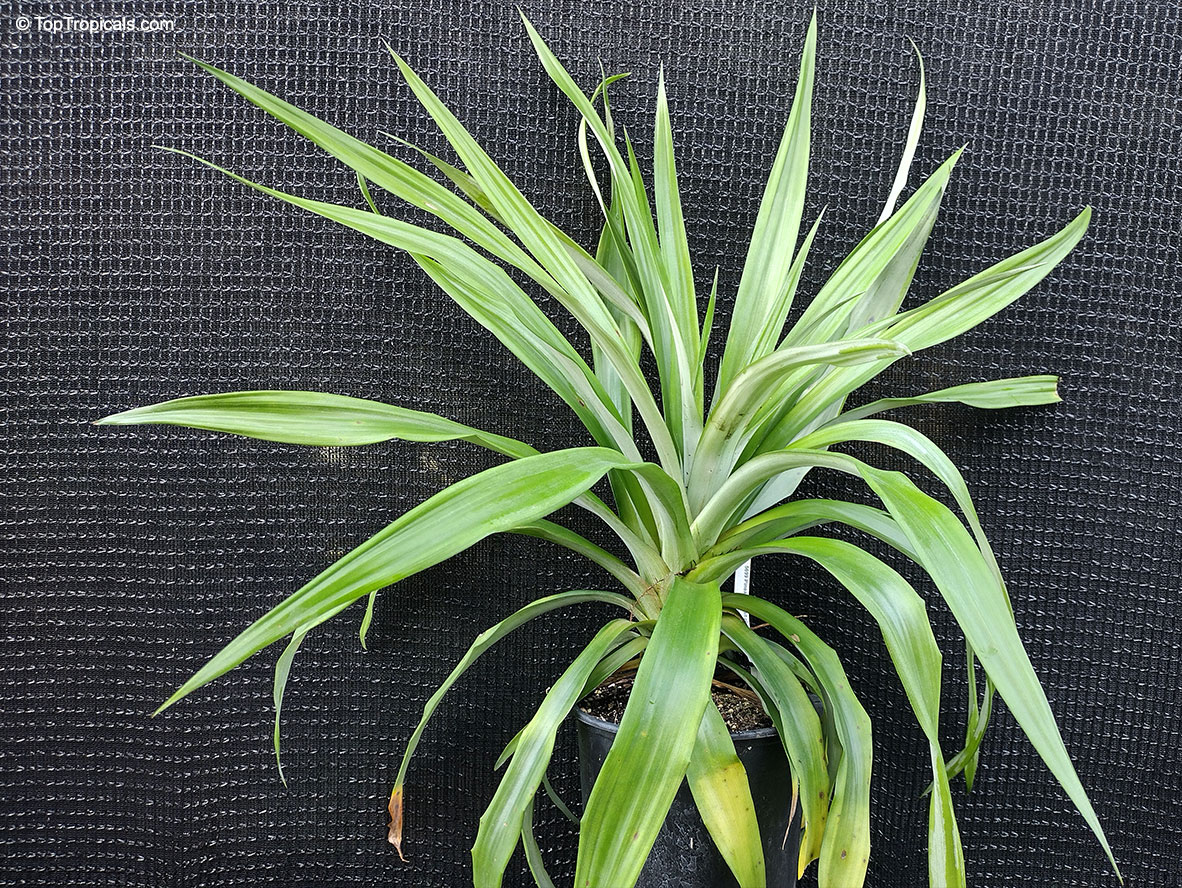Ananas sp. (Pineapple)
Top Tropicals Plant Encyclopedia
Botanical name: Ananas sp.
Common names: Pineapple, Pina
Family: Bromeliaceae
Subfamily: Bromelioideae
Origin: Brazil and Paraguay
Hardiness: 25°F








King of fruits! One of the most delicious fruits in the world, especially when picked and eaten fresh. Pineapples are a tropical fruit that is rich in vitamins and dietary fiber, with the ability to boost the immune system. Popular varieties of pineapples include Royal Hawaiian, Victoria Gourmet, Hawaiian Gold, Sugar Loaf, and Miniature Dwarf. There are also ornamental varieties, such as the variegated pineapple "Ivory Coast," that are valued for their exotic tropical look and require very little care.
Pineapples are short, stiff herbaceous plants that are closely related to bromeliads. They have long, thin leaves with spiny tips and prickly edges, and a violet or reddish flower on a dense head, which appears from January to March in Florida. The fruit is compound, fleshy, and usually yellow to orange when ripe, with a rough outer skin.
Pineapples are not very susceptible to diseases, but they can suffer from root rot, mealy bugs, and spider mites. To prevent these issues, it is important to keep the area clean and free of any infestations. In cold regions, it is necessary to bring the pineapple container inside and keep it in a cool place during the winter. If temperatures drop below freezing for an extended period, it is necessary to cover the container with a thick layer of mulch to protect the plant.
Pineapples can be grown and harvested in pots, but it is important to be careful with watering and only use acidic soil. Like any bromeliad, pineapples need very little water and the soil should be allowed to dry between waterings. The heaviest fruiting season for pineapples is summer, from May to September, although some varieties have a staggered fruiting season throughout the year.
Read more about Pineapple: The most luscious Hospitality Fruit: Pineapple.
Cultivars: Ananas sp. (Pineapple)
- Ananas sp. ''Ivory Coast'' (Variegated Pineapple)
- Ananas sp. ''Lava Burst'' ('Lava Burst' Pineapple)
- Ananas sp. ''Mongo'' ('Mongo' Pineapple)
- Ananas sp. ''Royal Hawaiian''
- Ananas sp. ''White Jade'' (Spineless Sweet Pineapple)
Similar plants: Ananas sp. (Pineapple)
Recommended Fertilizer: SUNSHINE Ananas - Pineapple and Bromeliad Booster
SUNSHINE-Honey - sugar booster
SUNSHINE-Superfood - micro-element booster
Recommended Fertilizer: SUNSHINE Ananas - Pineapple and Bromeliad Booster
SUNSHINE-Honey - sugar booster
SUNSHINE-Superfood - micro-element booster
Recommended Fertilizer: SUNSHINE Ananas - Pineapple and Bromeliad Booster
SUNSHINE-Honey - sugar booster
SUNSHINE-Superfood - micro-element booster
